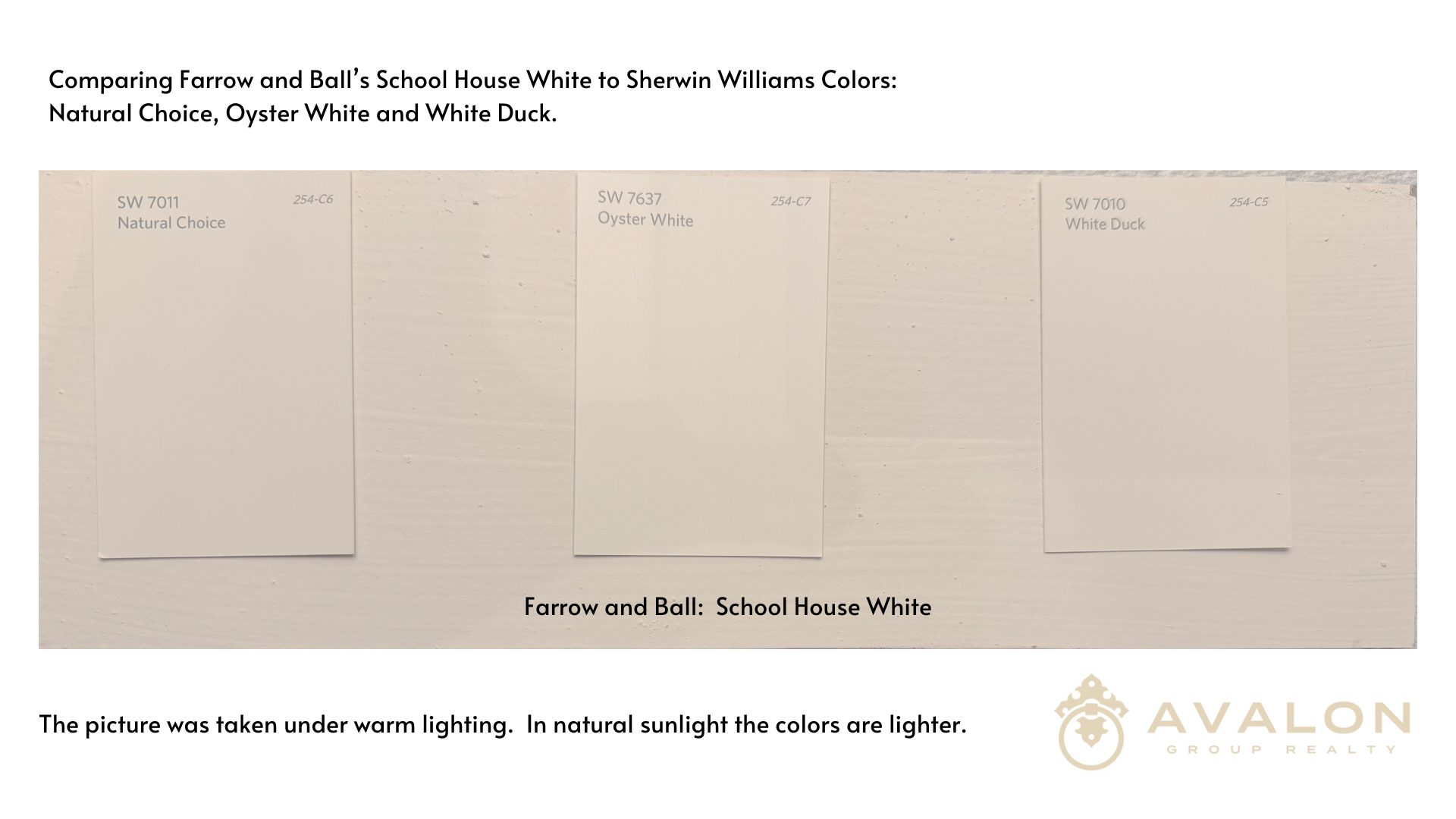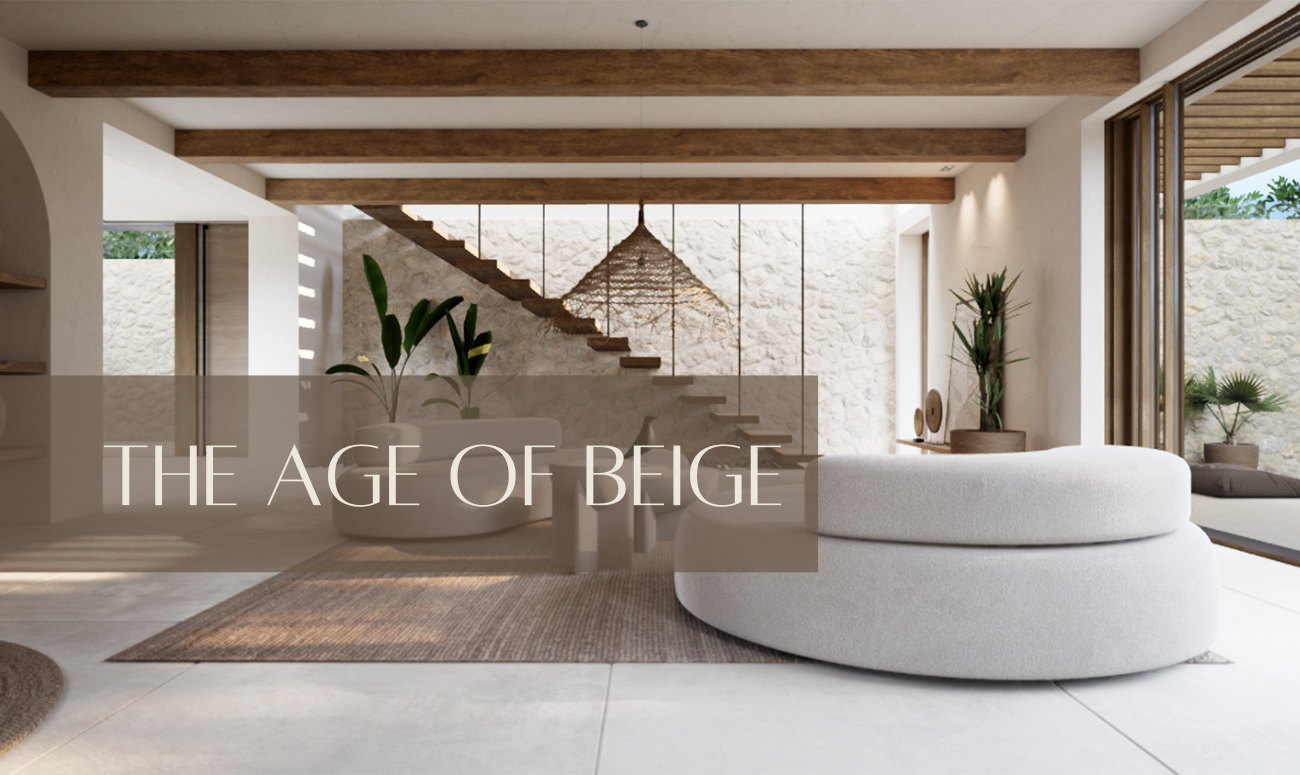The Age of Beige: Embracing Warmth in Home Design
As a Realtor with Avalon Group Realty in St. Petersburg, FL, I’ve witnessed countless design trends come and go. However, the recent shift from gray to beige in home interiors is more than just a passing fad – it’s a revolution in warmth and comfort. In this comprehensive report, we’ll explore why gray is on its way out, how beige is taking center stage, and what this means for homeowners and potential buyers alike.
The Age of Beige: The Demise of Gray: A Welcome Change
We may be living in the age of beige but that doesn’t give you an excuse to be a sad beige baby. For years, gray dominated the interior design landscape. Nevertheless, as Aaron Hunt, Broker of Avalon Group Realty, aptly puts it, “Gray is the color of tombstones, streets, and prisons. It’s time to lay it to rest for good.” This sentiment resonates with many in the industry who have grown weary of the cool, sometimes sterile feel that gray can impart to living spaces.
The Rise of Beige: Warmth is IN!
In contrast to its cooler predecessor, beige offers a warm, inviting atmosphere that buyers are increasingly drawn to. Pam Amante, one of our top realtors, notes, “The shift to beige is more than just a trend – it’s a return to comfort and coziness in home design. Buyers are looking for spaces that feel lived-in and welcoming from the moment they step through the door.”
Choosing the Perfect Beige: A Designer’s Shortcut
While the options for beige paint can seem overwhelming, there are clear winners that stand out. Just as we have go-to recipes in our culinary repertoire, designers often have a select few paint colors they return to time and again. These shades have proven their versatility and timeless appeal across various spaces and lighting conditions.
Top Timeless Paint Colors from Three Leading Brands
- Farrow and Ball:
- School House White
- Joa’s White
- Slipper Satin
- Benjamin Moore:
- Muslin
- Plaster of Paris
- Fossil
- Sherwin Williams:
- Natural Choice
- Grecian Ivory
- Oyster White

The Age Of Beige Farrow and Ball’s School House White Sherwin Williams Equivalent.
Yvette Kim, another valued member of our team, emphasizes the importance of these curated selections: “These beige tones have proven their staying power. They adapt beautifully to different lighting conditions and complement a wide range of décor styles, making them ideal for homeowners looking to create a timeless backdrop for their living spaces.”
The Art of Application: Creating a Cohesive Look
When it comes to applying these beige tones, consistency is key. For a seamless, sophisticated look, consider painting walls, ceiling, and trim in the same color. However, it’s crucial to vary the finishes:
- Walls: Satin finish
- Trim: Eggshell finish
- Ceiling: Flat finish (10% lighter than the wall color)
Josh Zanow, our resident expert on home staging, adds, “The goal is to create a unified, flowing appearance throughout the space. By using the same color in different finishes, you add subtle depth and interest without breaking the overall cohesion.”
The Age of Beige: The Importance of Testing
Despite these expert recommendations, it’s essential to remember that every space is unique. Lighting, existing furnishings, and architectural features all play a role in how a paint color will appear in your home. Therefore, it’s always wise to test your chosen color before committing to a full paint job.
Aaron Hunt advises, “Purchase a small quart of your preferred paint and apply it to several areas of the room. Observe how it looks at different times of day and under various lighting conditions. This small investment can save you from costly mistakes and ensure you achieve the desired effect.”
The Impact on Home Sales
As realtors, we’re not just interested in aesthetics – we’re focused on how design choices affect property values and sales potential. The shift to beige is more than just a visual preference; it can have a tangible impact on a home’s marketability.
Pam Amante shares her experience: “Homes with well-chosen, warm neutral tones like beige tend to sell faster and often at better prices. These colors create a blank canvas that allows potential buyers to envision their own lives in the space, while still providing a warm, inviting atmosphere.”
Looking Ahead: The Future of Home Color Trends
While beige is currently having its moment in the spotlight, it’s important to remember that design trends are cyclical. However, the move towards warmer, more inviting spaces is likely to persist.
Yvette Kim predicts, “We may see variations on the beige theme in the coming years – perhaps with subtle hints of pink or yellow undertones. The key is to choose colors that create a sense of comfort and timelessness.”
Embracing Warmth in Your Home
As we bid farewell to the era of gray and welcome the age of beige, homeowners have an opportunity to refresh their spaces with colors that exude warmth and comfort. Whether you’re preparing to sell your home or simply want to update your living environment, consider embracing this shift towards warmer neutrals.
Josh Zanow concludes, “The right paint color can transform a house into a home. By choosing warm, inviting tones like the beiges we’ve discussed, you’re not just following a trend – you’re creating a timeless backdrop for life’s precious moments.”
At Avalon Group Realty, we’re committed to helping our clients make informed decisions about every aspect of their homes, from color choices to major renovations. By staying ahead of design trends and understanding their impact on the real estate market, we ensure that our clients are well-positioned for success, whether they’re buying, selling, or simply enjoying their homes.
The Age of Beige: The Grey Debate: Why Warmer Tones Triumph
As we delve deeper into the shift from cool to warm tones in home design, it’s crucial to understand why grey has fallen out of favor and why warmer colors are taking the lead. Let’s explore three compelling reasons to reconsider using grey in your home, and discover some additional warm paint colors that can breathe new life into your living spaces.
Three Reasons to Avoid Grey in Your Home
- Cold and Dreary Atmosphere
Grey, while once praised for its versatility, often creates a cold and uninviting atmosphere. Aaron Hunt of Avalon Group Realty notes, “Grey can sap the energy from a room, making it feel lifeless and unwelcoming. In contrast, warmer tones like beige or soft whites can instantly uplift a space, making it feel cozy and inviting.”
- Overdone and Out of Style
The overuse of grey in recent years has led to a sense of design fatigue. Pam Amante observes, “We’ve seen grey everywhere – from walls to furniture to accessories. It’s become so ubiquitous that it no longer feels fresh or exciting. Homeowners and buyers alike are craving something different, something that feels more personal and warm.”
- Lack of Natural Inspiration
When we look to nature for design inspiration, grey rarely tops the list of beloved colors. Yvette Kim points out, “Think about the colors in nature that truly inspire us – the warm golden hues of a sunset, the rich browns of the earth, the soft creams of seashells. Grey, on the other hand, often reminds us of cloudy days or concrete – not exactly the feeling we want to evoke in our homes.”
The Haunted House Effect
Perhaps one of the most compelling arguments against grey is what we at Avalon Group Realty call “The Haunted House Effect.” Josh Zanow explains, “Excessive use of grey can make a home feel eerily reminiscent of a haunted house – cold, unwelcoming, and slightly unsettling. It’s the opposite of the warm, lived-in feel that most homeowners and buyers are seeking.”
Embracing Warmth: Additional Paint Color Recommendations
To help homeowners transition away from grey and towards warmer, more inviting tones, we’ve compiled a list of additional paint colors that can transform your space:
- Blondie by Portola This warm, creamy hue brings a touch of sunshine to any room, creating a bright and cheerful atmosphere.
- Arrowroote by Sherwin Williams A soft, neutral beige that provides warmth without overwhelming the senses, perfect for creating a serene backdrop.
- Linen White by Benjamin Moore This classic warm white offers a clean, fresh look while still maintaining a cozy feel.
- Warm White by Dunn Edwards As the name suggests, this shade provides a gentle warmth that can make any space feel more inviting.
The Age of Beige: Implementing Warm Tones in Your Home
When incorporating these warmer tones into your home, consider the following tips:
- Start Small: If you’re hesitant to commit to a full room makeover, start by painting an accent wall or a smaller space like a powder room.
- Consider Lighting: Remember that natural and artificial lighting can significantly impact how a color appears. Test your chosen color in different lighting conditions before making a final decision.
- Coordinate with Existing Elements: Ensure your new paint color complements existing furniture, flooring, and fixtures in your home.
- Create Depth: Use varying shades of your chosen warm color to add depth and interest to your space.
Living the New Cream Dream: The Future of Home Color Trends
As we look to the future, the trend towards warmer, more natural tones shows no signs of slowing down. Aaron Hunt predicts, “We’ll continue to see a move towards colors that make us feel good – warm whites, soft beiges, and even muted earth tones. These colors create a sense of comfort and connection that people are craving in their homes.”
In conclusion, the shift away from grey and towards warmer tones represents more than just a change in color preference. It reflects a broader desire for homes that feel welcoming, comfortable, and alive. By embracing these warmer hues, homeowners can create spaces that not only look beautiful but also feel good to live in – a crucial factor whether you’re planning to stay in your home for years to come or preparing to put it on the market.
If you are looking for a Top Realtor in St Petersburg FL visit https://avalongrouptampabay.com/




